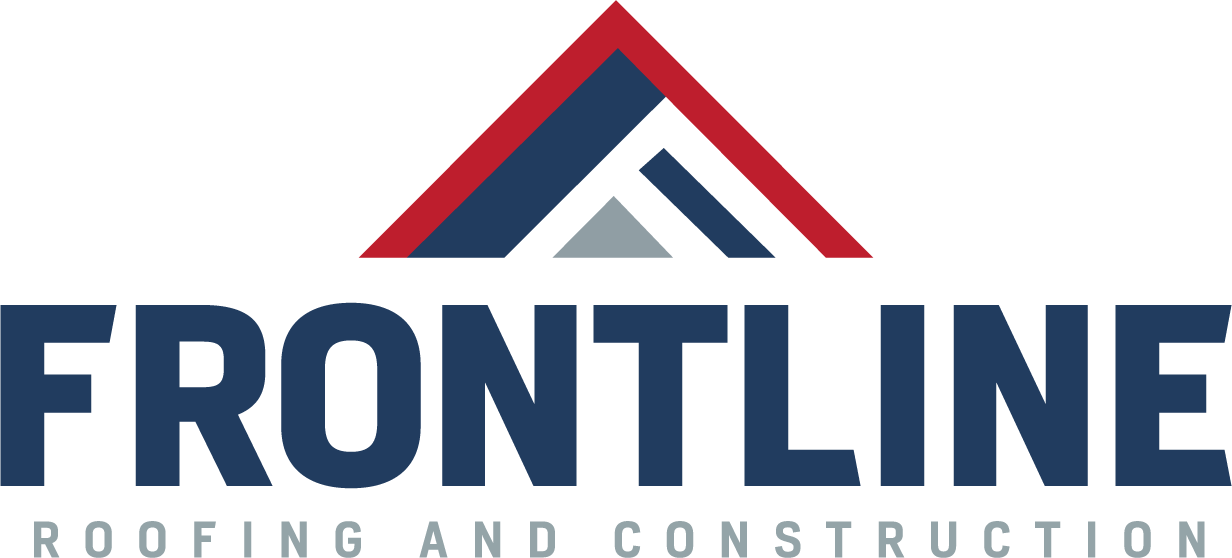Storm-Damaged Roof? 8 Signs You Need Urgent Repairs Now
When a powerful storm hits, it’s not just your trees or power lines at risk, your roof takes the brunt of nature’s fury. Unfortunately, roof damage isn’t always easy to spot, especially if you’re unsure what to look for. But ignoring the signs, even for a few days, could lead to expensive repairs, mold growth, or even a full roof replacement.
At Frontline Roofing & Construction, we specialize in helping homeowners spot, document, and repair storm damage before it spirals out of control. In this guide, we’ll walk you through eight clear signs your roof needs immediate repair after a storm and what to do next.
1. Missing or Damaged Shingles
The most obvious, and often the most urgent sign of storm damage is missing or broken shingles. Wind gusts from severe storms can lift and rip shingles clean off, leaving the underlayment exposed to rain and UV damage.
What to look for: Bare spots, curling edges, cracked or dented shingles, granules in your gutters.
Why it matters: Exposed areas let in water, leading to mold, rot, and insulation damage.
2. Leaks and Water Stains
If you notice water dripping from your ceiling or brownish stains on your walls after a storm, your roof’s waterproof barrier may have been breached.
What to look for: Damp spots on the ceiling, peeling paint, bubbling drywall, or puddles in your attic.
Why it matters: Even a small leak can escalate quickly into serious structural damage if left untreated.
3. Sagging Roof Sections
Storms can saturate your roof with water. Over time, or after one particularly intense storm, this can cause areas of your roof to sag or warp.
What to look for: Visible dips or uneven lines in the roof when viewed from the street.
Why it matters: A sagging roof could mean trapped moisture, rotting wood, or even potential collapse if not handled quickly.
4. Clogged or Damaged Gutters
Your gutters are the unsung heroes of your roofing system. After a storm, they often get clogged with shingle granules, branches, or other debris.
What to look for: Overflowing water, detached gutter sections, or heavy granule loss (especially near downspouts).
Why it matters: Clogged or broken gutters can cause water to back up onto your roof or pool at your foundation, leading to leaks and erosion.
5. Flashing Damage Around Chimneys and Vents
Flashing is the metal sealing used around vents, chimneys, and skylights. High winds and hail can loosen or dent these vital seals.
What to look for: Gaps in metal seams, rust spots, or signs of water around chimney interiors or vent pipes.
Why it matters: Damaged flashing is a top cause of roof leaks and can go unnoticed until major repairs are needed.
6. Debris Piled on the Roof
Large limbs or debris left on your roof after a storm aren’t just unsightly, they can cause punctures or compress roofing materials.
What to look for: Branches, tree limbs, or trash visibly sitting on your roof or in your gutters.
Why it matters: Heavy debris can crack shingles, flatten insulation, and block water flow, increasing the risk of pooling and damage.
7. Interior Mold or Mildew Smells
If your attic smells musty or you’ve noticed increased allergy symptoms indoors after a storm, moisture may have crept in undetected.
What to look for: Damp smells, visible mold on beams or insulation, or increased humidity indoors.
Why it matters: Mold is both a health risk and a signal that moisture is infiltrating your home, usually through the roof.
8. Higher Energy Bills Post-Storm
This one might surprise you. Roof damage can disrupt your attic’s ventilation and insulation, making it harder to regulate indoor temperatures.
What to look for: Spikes in heating or cooling costs after a storm, especially when your usage hasn’t changed.
Why it matters: Damaged roofing reduces energy efficiency, making your HVAC system work overtime, and adding unnecessary cost.
Why Act Quickly? The Clock Is Ticking
The longer you wait to address storm damage, the worse it gets—and the more costly it becomes. Insurance claims can also be time-sensitive, with many policies requiring claims to be filed within 30 to 60 days post-storm.
Frontline Roofing & Construction works fast to document your roof damage, assist with the insurance process, and deliver reliable repairs that restore peace of mind.
Don’t Wait, Protect Your Home Today
If you’ve experienced a recent storm and see (or suspect) any of the signs we’ve mentioned, don’t delay. What looks like minor damage today can quickly turn into a major headache tomorrow.
Call Frontline Roofing & Construction Today for a Free Storm Damage Inspection!
Let us be the frontline defense for your roof, so you can get back to life, stress-free.
Conclusion: Your Roof Needs a Watchful Eye
After a storm, your roof’s condition can change overnight. By knowing what to look for and acting fast, you protect your home’s value, comfort, and safety. Frontline Roofing & Construction is your local partner for expert inspections, fast repairs, and insurance-friendly service. Don’t leave your roof’s future up to chance.
Contact Frontline Roofing & Construction today, because when the storm clears, we’re just getting started.


